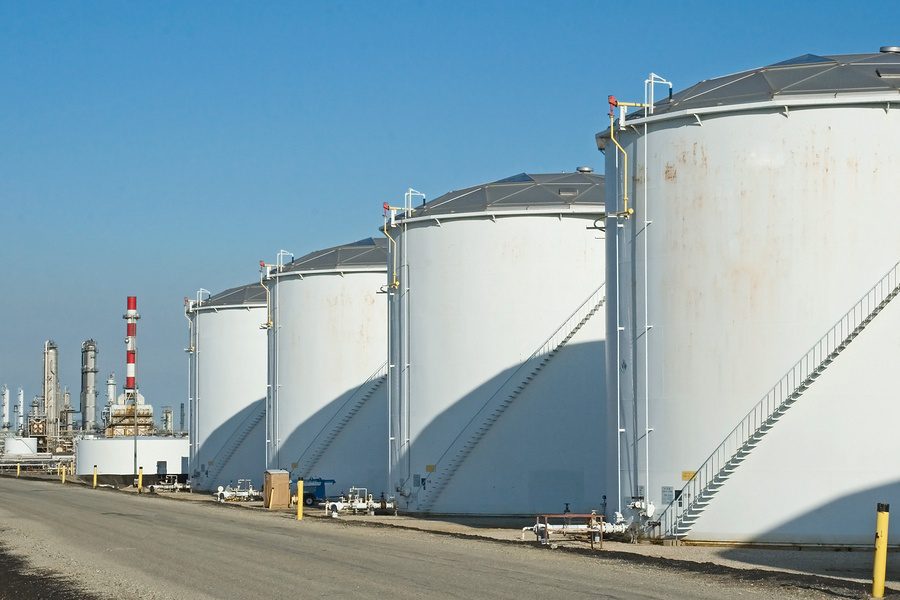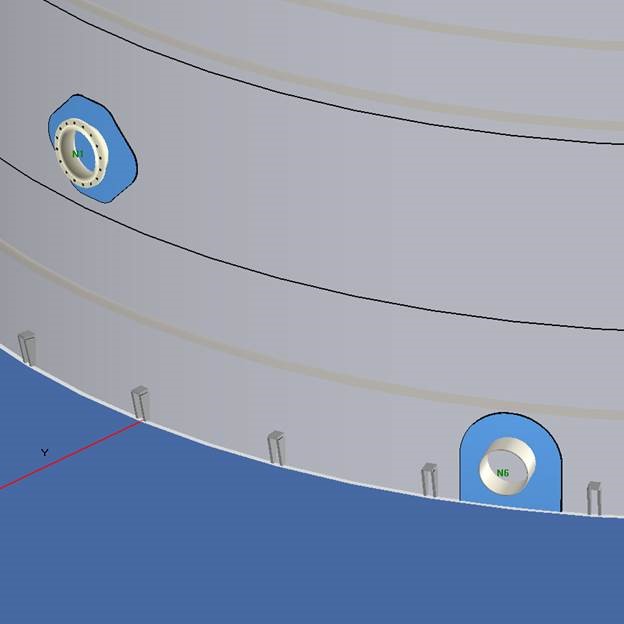The Future of API 650 Welding Inspection with Modern Digital Methods Integration
Wiki Article
Just How Welding Evaluation Works: A Comprehensive Guide for Professionals
Welding evaluation plays an important role in guaranteeing the security and dependability of bonded structures. It involves a systematic approach that consists of both aesthetic examination and advanced testing techniques. Experts need to familiarize themselves with essential criteria and regulations controling the sector. Understanding the common issues that can arise during welding is necessary. This overview will certainly explore these elements thoroughly, supplying understandings into the processes that promote top quality and honesty in welding.Recognizing the Importance of Welding Inspection
While several may ignore the significance of welding assessment, it plays a crucial duty in ensuring the stability and safety of welded frameworks. Effective welding examination determines potential issues and imperfections that can jeopardize structural stamina and result in tragic failures. The inspection process includes various strategies, such as visual assessments, ultrasonic testing, and radiographic evaluations, each adding to the total analysis of weld high quality.
Along with guarding the architectural honesty, welding examination assures compliance with sector standards and client specs. By ensuring that welds meet required attributes and tolerances, inspections assist maintain the reliability and longevity of parts in different applications, from construction to aerospace. A rigorous examination procedure cultivates a culture of quality and responsibility amongst welders and makers. Inevitably, welding inspection is not just a procedural action; it is an important technique that underpins the security and performance of crafted systems throughout diverse fields.
Key Standards and Regulations in Welding Assessment
The structure of effective welding assessment rests on adherence to established requirements and policies. Different organizations, such as the American Welding Society (AWS) and the American National Requirement Institute (ANSI), stated standards that ensure high quality and safety in welding techniques. Secret requirements, such as AWS D1.1 for structural welding and ASME Section IX for stress vessels, supply complete requirements for welding examinations, credentials, and procedures. Governing structures, including those from the Occupational Safety And Security and Health And Wellness Administration (OSHA), mandate safety methods and employee defenses in welding settings. Conformity with these criteria is important for achieving regular weld top quality and decreasing the danger of failings. In addition, worldwide standards like ISO 3834 additionally enhance worldwide uniformity in welding examination methods. Professionals need to stay informed about these guidelines to ensure that their evaluation techniques line up with market expectations and lawful requirements, thus securing both employees and architectural stability.First Preparation and Visual Inspection Techniques

Efficient welding evaluation begins with an extensive pre-inspection checklist that ensures all essential conditions are met before the real assessment happens. Following this preparation, visual issue recognition plays an essential function in assessing weld top quality, permitting inspectors to detect problems such as fractures or incorrect blend. Together, these strategies develop the structure for a successful welding evaluation procedure.
Pre-Inspection Checklist
Prior to beginning any welding examination, a thorough pre-inspection list is vital to ensure that all required prep work are finished which aesthetic examination methods are properly utilized. Crucial element of this list consist of confirming the welding procedure requirements (WPS), ensuring all equipment is adjusted and in excellent functioning condition, and validating that the examiner has the needed qualifications. Additionally, it is crucial to assess any type of previous inspection reports and to analyze the workplace for security threats. The examiner ought to also validate that all pertinent paperwork, such as product certificates and evaluation documents, is conveniently available. Completing this checklist helps to establish a strong structure for a successful inspection process, improving the dependability of the results gotten.Visual Issue Recognition
A successful aesthetic defect recognition process begins with mindful preliminary prep work and the application of recognized visual evaluation methods. Inspectors should ensure that the welding location is clean and well-lit, as adequate presence is crucial for finding issues. A detailed exam of the weld joint's surface area permits for the recognition of discontinuities, such as cracks, undercuts, or porosity. Assessors typically make use of tools like amplifying glasses or mirrors to boost their sight of hard-to-reach areas. In addition, they should know with the specific welding requirements and guidelines appropriate to the project. By adhering to these techniques, examiners can efficiently identify prospective issues, guarding the stability of the weld and compliance with industry requirements.Non-Destructive Testing Techniques: An Overview
Non-destructive screening (NDT) methods play a necessary duty in the welding evaluation procedure by guaranteeing the stability and reliability of welded structures without creating any damages (API 650 Welding Inspection). These techniques i thought about this permit assessors to evaluate the high quality of welds while maintaining the parts being checked out. Usual NDT methods include ultrasonic screening, radiographic testing, magnetic particle screening, and dye penetrant testing, each offering special advantagesUltrasonic testing employs high-frequency sound waves to identify interior imperfections, while radiographic testing makes use of X-rays or gamma rays to envision the internal structure of welds. Magnetic particle testing reveals surface area and near-surface issues by using an electromagnetic field and iron particles to the weld location. Dye penetrant testing highlights surface-breaking problems through the application of a colored dye. With each other, these NDT techniques offer vital insights right into weld top quality, enabling professionals to make enlightened choices pertaining to security and conformity in welding applications.
Common Issues and Their Implications
Recognizing common defects in welded joints is essential for keeping architectural honesty and safety and security. Different defects can arise during the welding process, each bring potential effects for the total efficiency of the structure. Porosity, characterized by tiny gas pockets within the weld, can compromise the joint and endanger its load-bearing ability. Cracks may develop due to thermal tension or incorrect air conditioning, resulting in possible failure under stress and anxiety. Incomplete blend occurs when the weld metal does not fully bond with the base product, leading to weak joints that might not endure intended loads. Undercutting, where the base metal is eroded, can also lower the reliable cross-section of the weld. Additionally, extreme support can develop stress and anxiety concentrations that can bring about failing. Acknowledging these flaws quickly permits corrective actions, making sure the long life and integrity of bonded frameworks in crucial applications.Devices and Tools Used in Welding Examination
Reliable welding inspection depends on a click resources variety of specialized devices and devices to assure the high quality and honesty of bonded joints. Necessary tools include visual assessment tools, such as multiplying borescopes and glasses, which permit assessors to very closely examine welds for surface area issues. Non-destructive screening (NDT) approaches, such as ultrasonic testing, radiographic screening, and magnetic particle screening, are fundamental for identifying inner flaws without damaging the material.Dimension tools, consisting of calipers and weld determines, assist identify and assess dimensions compliance with requirements. Additionally, hardness testers assess the mechanical residential or commercial properties of bonded joints. Personal protective equipment (PPE) is also crucial, protecting the safety and security of inspectors while working in possibly harmful atmospheres (API 650 Welding Inspection). Each device offers a particular function, jointly enhancing the efficiency of welding assessment and adding to the dependability of finished tasks
Often Asked Questions
What Credentials Are Needed to Come To Be a Welding Inspector?
To end up being a welding inspector, people usually require pertinent accreditations, such as AWS CWI or CSWIP, in addition to experience in welding procedures, design principles, and expertise of inspection techniques, safety and security criteria, and applicable codes.Exactly How Typically Should Welding Inspections Be Conducted?
Welding examinations should be conducted consistently, preferably at numerous task phases, consisting of pre-weld, during-weld, and post-weld. Frequency may likewise depend upon market criteria, task specifications, and the complexity of the welds involved.Can Welding Defects Be Fixed After Assessment?

Yes, welding issues can commonly be fixed after inspection. Depending on the seriousness and sort of problem, appropriate techniques such as revamping or extra welding might be employed to recover structural honesty and this safety compliance.
What Industries Require Normal Welding Examinations?

Different markets, consisting of building and construction, manufacturing, aerospace, and automobile, call for regular welding evaluations - API 650 Welding Inspection. These examinations ensure adherence to safety requirements and top quality control, reducing threats connected with structural honesty and operational performance in welded elements
Exactly how Do I Pick a Welding Assessment Solution?
To select a welding evaluation solution, one must take into consideration credentials, experience, qualifications, and market credibility. Additionally, reviewing consumer testimonials and assuring the service satisfies appropriate requirements can help guarantee top quality examinations and reputable results.
While lots of may underestimate the significance of welding inspection, it plays a vital function in guaranteeing the integrity and safety and security of welded structures. Key requirements, such as AWS D1.1 for architectural welding and ASME Area IX for stress vessels, supply detailed standards for welding certifications, examinations, and procedures. Efficient welding examination starts with a comprehensive pre-inspection list that assures all necessary problems are fulfilled prior to the real examination takes place. Before starting any welding evaluation, a comprehensive pre-inspection checklist is vital to assure that all essential prep work are completed and that visual inspection techniques are properly utilized. Non-destructive screening (NDT) methods play an essential role in the welding evaluation process by making certain the stability and reliability of welded frameworks without causing any damage.
Report this wiki page